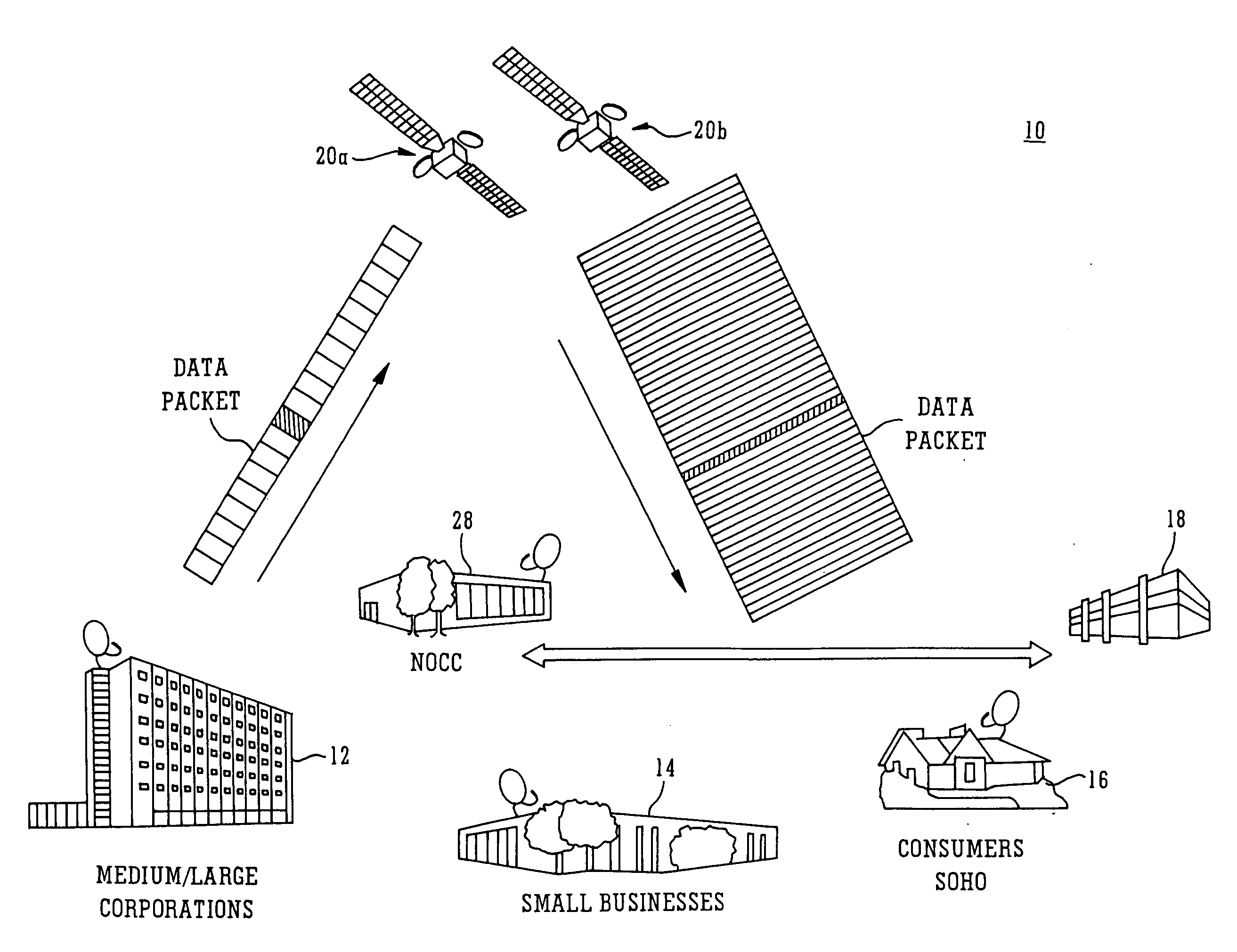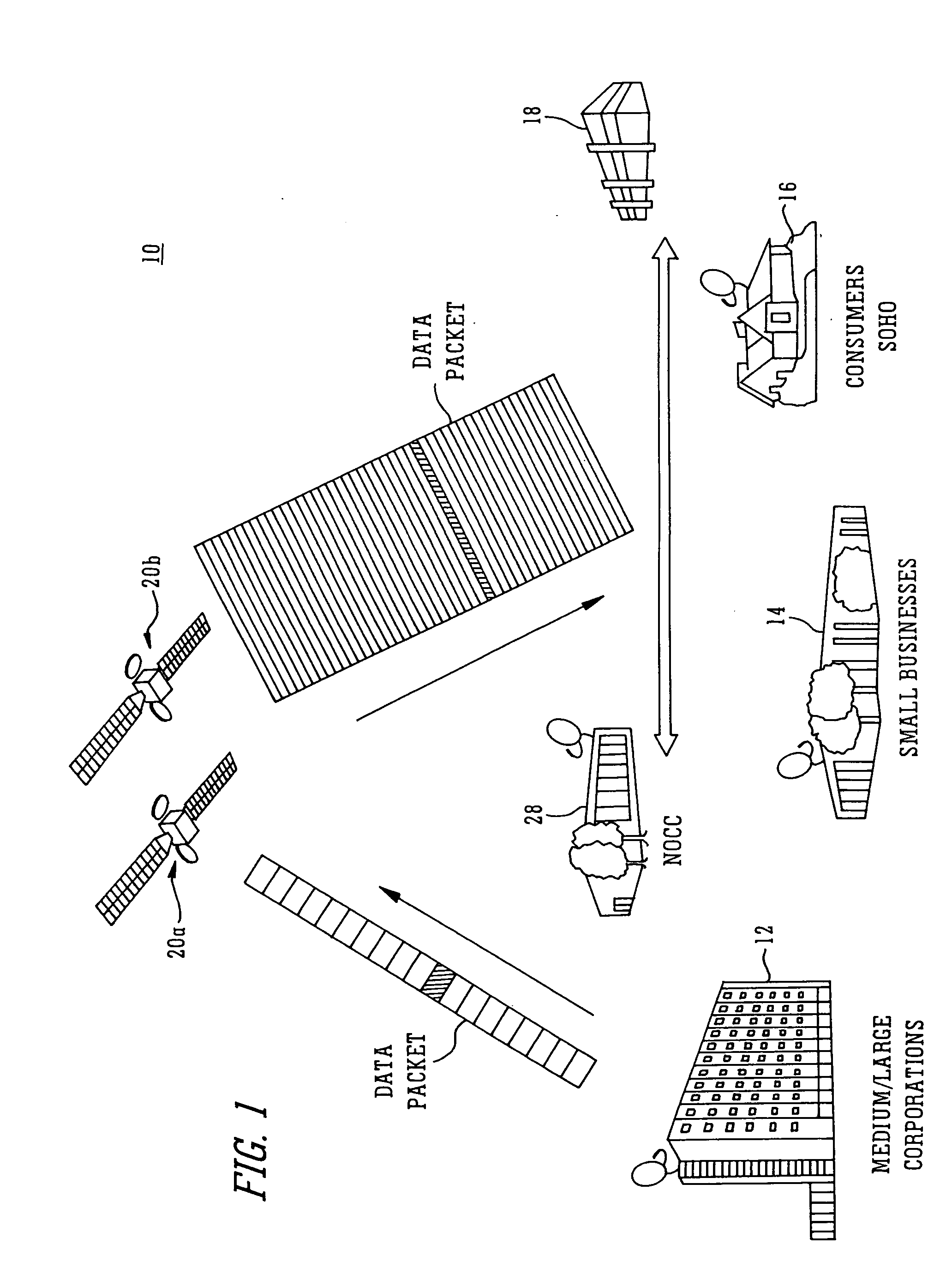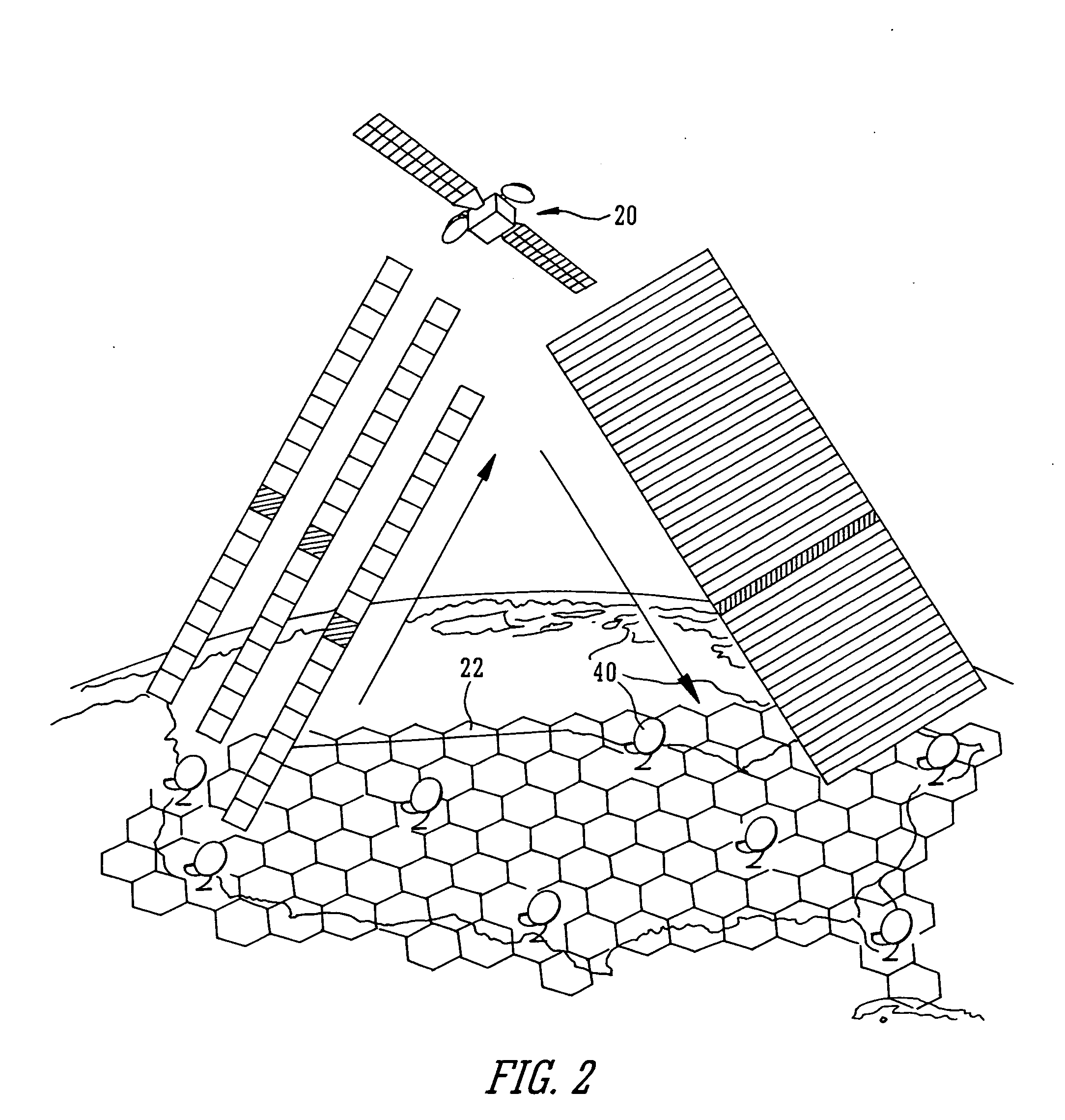Method and apparatus for transmitting and receiving multiple services utilizing a single receiver in a broadband satellite system
a broadband satellite and receiver technology, applied in the direction of electrical equipment, radio transmission, transmission, etc., can solve the problems of limiting users' delivery options, unable to provide peer-to-peer services, and difficulty in implementing peer-to-peer communication between individual users, so as to achieve higher bandwidth services and speed.
- Summary
- Abstract
- Description
- Claims
- Application Information
AI Technical Summary
Benefits of technology
Problems solved by technology
Method used
Image
Examples
Embodiment Construction
[0035] Referring to FIG. 1, the broadband multimedia satellite system 10 of the present invention preferably employs one or more geosynchronous orbit (GEO) satellites 20a and 20b and offers a wide range of user data rates and services on a bandwidth-on-demand (BOD) basis. The system uses the latest generation of high-power satellites, employing on-board digital signal processing, multiple high-gain spot beams, and on-board packet routing.
[0036] The broadband multimedia satellite system 10 is preferably capable of supporting a maximum peak capacity of at least 10 Gigabits per second (Gbps) of user data in a point-to-point (PTP) transmission mode. Delivery of services to users is provided via low-cost ultra-small-aperture terminals (USATs). The broadband multimedia satellite system 10 operates in the 30 / 20 GHz Ka-band spectrum allocated to Ka-band Fixed Satellite Services (FSS). The system capacity is scalable by either the addition of satellites in adjacent orbital slots, or by addi...
PUM
 Login to View More
Login to View More Abstract
Description
Claims
Application Information
 Login to View More
Login to View More - R&D
- Intellectual Property
- Life Sciences
- Materials
- Tech Scout
- Unparalleled Data Quality
- Higher Quality Content
- 60% Fewer Hallucinations
Browse by: Latest US Patents, China's latest patents, Technical Efficacy Thesaurus, Application Domain, Technology Topic, Popular Technical Reports.
© 2025 PatSnap. All rights reserved.Legal|Privacy policy|Modern Slavery Act Transparency Statement|Sitemap|About US| Contact US: help@patsnap.com



